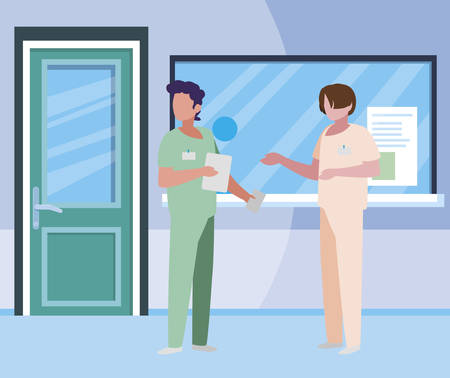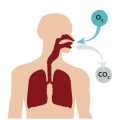Understanding PTSD in the Military Context
What Is PTSD?
Post-Traumatic Stress Disorder (PTSD) is a mental health condition that can develop after someone experiences or witnesses a traumatic event. In the military, these events often include combat, training accidents, or other life-threatening situations. PTSD can affect anyone, but service members and veterans are at a higher risk because of the unique challenges they face during and after their service.
Prevalence of PTSD Among U.S. Service Members and Veterans
The rates of PTSD among U.S. military personnel are significantly higher than those seen in the general population. According to the U.S. Department of Veterans Affairs (VA), about 11-20% of veterans who served in Operations Iraqi Freedom and Enduring Freedom have PTSD in a given year. For Gulf War (Desert Storm) veterans, it’s around 12%, and for Vietnam War veterans, estimates are even higher.
| Conflict/Era | % with PTSD (per year) |
|---|---|
| Iraq & Afghanistan (OIF/OEF) | 11–20% |
| Gulf War (Desert Storm) | ~12% |
| Vietnam War | ~30% |
Unique Challenges Faced by Military Personnel
Military life comes with its own set of challenges that make dealing with PTSD different from civilian experiences. Service members may struggle with:
- High stress from deployments and combat situations
- Separation from family and support networks
- The pressure to appear strong and resilient at all times
- Frequent relocations and changes in environment
- Difficulties transitioning back to civilian life after service
Cultural Stigma Around Mental Health in the Military
One of the biggest barriers to seeking help for PTSD in military communities is stigma. Many service members worry that admitting to mental health struggles will make them look weak or unfit for duty. There’s a common belief that “toughing it out” is part of the job. This mindset can prevent individuals from getting the care they need.
Common Myths vs. Facts About PTSD in the Military
| Myth | Fact |
|---|---|
| Only people who see combat get PTSD. | Any traumatic event, even outside combat, can cause PTSD. |
| Tough soldiers don’t get PTSD. | PTSD is a medical condition that can affect anyone. |
| Getting help means you’re weak. | Seeking help shows strength and responsibility. |
The Path Forward
The military is working to change attitudes toward mental health by promoting awareness and encouraging service members to seek support early on. Understanding how widespread PTSD is—and recognizing the unique pressures faced by those who serve—is an important first step toward building better support systems for our nation’s heroes.
2. Military and VA Mental Health Services
When it comes to helping service members and veterans with PTSD, the U.S. military and the Department of Veterans Affairs (VA) play important roles. Both organizations have developed programs and support systems to make sure those affected by trauma get the care they need.
Department of Defense (DoD) Support
The DoD is responsible for active-duty service members. It provides a range of mental health services, from early screening to ongoing therapy. Service members can access help through military treatment facilities on bases or through telehealth appointments if they are deployed or stationed far from home.
Key DoD Services for PTSD
| Service | Description |
|---|---|
| Counseling | Individual and group sessions led by mental health professionals |
| Peer Support Programs | Opportunities to connect with others who have similar experiences |
| Crisis Hotlines | 24/7 confidential phone or chat support for immediate help |
| Specialized Therapy | Treatments such as Cognitive Processing Therapy (CPT) and Prolonged Exposure (PE) therapy tailored for trauma recovery |
Veterans Affairs (VA) Services
The VA focuses on helping veterans after they leave active duty. The VA has one of the largest networks of mental health providers in the country, making it easier for veterans to find support close to home or online.
Main VA Programs for PTSD Support
| Program | How It Helps Veterans |
|---|---|
| Vet Centers | Community-based centers offering counseling and outreach for combat veterans and their families |
| PTSD Treatment Teams | Groups of specialists focused on evidence-based treatments for PTSD within VA hospitals and clinics |
| TeleMental Health Services | Virtual therapy options for those living in rural areas or unable to visit a clinic in person |
| Medication Management | Medical evaluation and prescription of medications that may help manage PTSD symptoms alongside therapy options |
Working Together for Better Care
The DoD and VA often work together to make sure there is no gap in care when a service member leaves the military. This means records are shared (with permission), and care plans follow veterans as they move from active duty into civilian life. Both organizations aim to reduce stigma around seeking help and encourage early intervention so that those struggling with PTSD can start healing sooner.

3. Peer Support Programs and Community Involvement
One of the most effective ways the U.S. military addresses PTSD is through peer support programs and active community involvement. These resources give veterans and service members a safe space to share their experiences, learn from others who have faced similar challenges, and find encouragement as they navigate life after trauma.
Peer-Led Initiatives
Peer-led initiatives are programs run by veterans or active-duty service members who understand what it’s like to deal with PTSD. They offer understanding and advice that comes from real-life experience, making it easier for participants to open up and trust the process. Popular examples include:
- Battle Buddy Systems: Pairing individuals so they can check in on each other regularly.
- Peer Mentorship Programs: Connecting newer veterans with those who have already made progress in managing PTSD.
Veteran Support Groups
Support groups bring together people facing similar struggles. Led by trained facilitators or experienced peers, these groups focus on topics such as stress management, coping skills, and rebuilding relationships. Meetings are often held at local VA hospitals, community centers, or even online for greater accessibility.
Types of Veteran Support Groups
| Group Name | Main Focus | Location |
|---|---|---|
| Vet Centers | Counseling and group therapy | Nationwide (in-person & virtual) |
| The Mission Continues | Community service & connection | Local chapters across the U.S. |
| IAVA (Iraq and Afghanistan Veterans of America) | Peer-to-peer support & advocacy | Online and in-person events |
| MVP (Merging Vets & Players) | Athletic activities & group discussions | Major cities & virtual meetings |
Nonprofit Organizations Making a Difference
Many nonprofit organizations play a big role in supporting veterans with PTSD. They offer everything from therapy dogs to job training and recreational activities that help improve mental health. Some well-known nonprofits include:
- Wounded Warrior Project: Provides mental health workshops and retreats.
- Team Red, White & Blue (Team RWB): Connects veterans through fitness and social activities.
- Give an Hour: Offers free mental health care from licensed professionals.
- K9s For Warriors: Trains service dogs for veterans with PTSD.
How Peer Support Helps Veterans with PTSD
| Benefit | Description |
|---|---|
| Sense of Belonging | Reduces feelings of isolation by connecting with others who understand. |
| Practical Advice | Offers tips and strategies that have worked for fellow veterans. |
| Mental Health Improvement | Lowers symptoms of anxiety, depression, and stress. |
| Lifelong Friendships | Builds supportive relationships outside of clinical settings. |
If you or someone you know is struggling with PTSD, reaching out to peer support programs or veteran groups can be an important step toward healing. These communities understand what you’re going through and can help make the journey easier.
4. Innovations in Treatment and Rehabilitation
Telehealth: Expanding Access to Care
The U.S. military and Veterans Affairs (VA) have adopted telehealth services to make PTSD treatment more accessible. Through secure video calls, veterans and service members can connect with mental health professionals from home or anywhere with internet access. This is especially helpful for those living in rural areas or facing mobility challenges.
Key Benefits of Telehealth
| Benefit | Description |
|---|---|
| Convenience | No need to travel; appointments can happen at home |
| Privacy | More discretion for those concerned about stigma |
| Flexible Scheduling | Easier to fit into busy or unpredictable schedules |
New Medications: Evolving Options for Relief
Recent years have seen the introduction of new medications designed to target PTSD symptoms more effectively. While traditional antidepressants are still widely used, newer drugs are being studied and sometimes prescribed when standard treatments aren’t enough. The VA and military healthcare providers stay up-to-date on these advancements to offer the best options available.
Trauma-Informed Care: Understanding the Whole Person
The U.S. military now puts a greater focus on trauma-informed care. This approach recognizes that PTSD affects every part of a person’s life—physical, emotional, and social. Providers are trained to create safe environments, build trust, and avoid triggers that might cause distress during treatment. This helps veterans feel respected and understood throughout their recovery journey.
Alternative Therapies: Popular Approaches in the U.S.
A growing number of veterans seek out alternative therapies as part of their PTSD care plan. These therapies are often used alongside traditional treatments to help manage stress and improve well-being. Some popular options include:
Examples of Alternative Therapies for PTSD
| Therapy Type | Description | Why It’s Popular |
|---|---|---|
| Yoga & Meditation | Mind-body practices that promote relaxation and mindfulness | Easily accessible, helps reduce anxiety and improve sleep |
| Equine Therapy (Horse Therapy) | Working with horses under professional guidance | Improves confidence, emotional regulation, and trust-building skills |
| Art & Music Therapy | Creative outlets to express feelings safely | Helps process trauma without relying only on words |
| Service Dogs & Animal-Assisted Therapy | Support animals provide comfort and routine for daily life | Lowers stress levels, increases motivation to engage socially |
The U.S. military’s evolving approach to PTSD care reflects a commitment to innovation, flexibility, and meeting veterans where they are—both literally and emotionally. With a blend of technology, medication advances, compassionate care, and alternative therapies, more service members than ever can find support that fits their needs.
5. Ongoing Challenges and Future Directions
Gaps in Support for Veterans and Service Members
While the U.S. military has made progress in addressing PTSD among its members, there are still gaps in support that need attention. Many veterans and active-duty personnel report long wait times to see mental health professionals, limited availability of specialized care, and difficulties navigating the Veterans Affairs (VA) system. In some rural areas, access to mental health services can be especially challenging due to distance or a shortage of providers.
Common Barriers to PTSD Care
| Barrier | Description |
|---|---|
| Stigma | Fear of judgment or negative impact on career prevents some from seeking help |
| Access | Lack of nearby clinics or specialists, especially in rural areas |
| Bureaucracy | Complex paperwork and procedures within the VA system can be overwhelming |
| Adequate Resources | Shortage of mental health professionals trained in trauma care |
Efforts to Reduce Stigma Around PTSD
The military and veteran communities are working hard to change the conversation around mental health. Campaigns like “Real Warriors” encourage open discussions about PTSD and other invisible wounds. Leaders now speak more openly about their own experiences with stress and trauma, helping to normalize asking for help. Peer support groups have also become more common, providing a safe space for service members to share their stories.
Examples of Anti-Stigma Initiatives:
- Mental Health First Aid training for soldiers and leaders
- Awareness campaigns on social media and military bases
- Peer mentorship programs connecting new veterans with experienced ones who have managed PTSD successfully
Calls to Action: Improving Care and Accessibility
To better support those dealing with PTSD, advocates recommend several changes:
- Expanding telehealth services so veterans can get help no matter where they live
- Simplifying the VA application process for mental health care
- Increasing funding for research into new treatments for PTSD, including alternative therapies like equine therapy or mindfulness training
- Offering ongoing training for healthcare providers to ensure culturally competent care for military personnel and their families
- Building stronger partnerships between community organizations, local governments, and the military to create a wider safety net of support resources
Addressing these ongoing challenges requires teamwork from military leaders, healthcare providers, policymakers, veterans’ organizations, and the broader public. By working together, we can create a more supportive environment that empowers every service member and veteran to seek the help they deserve.


